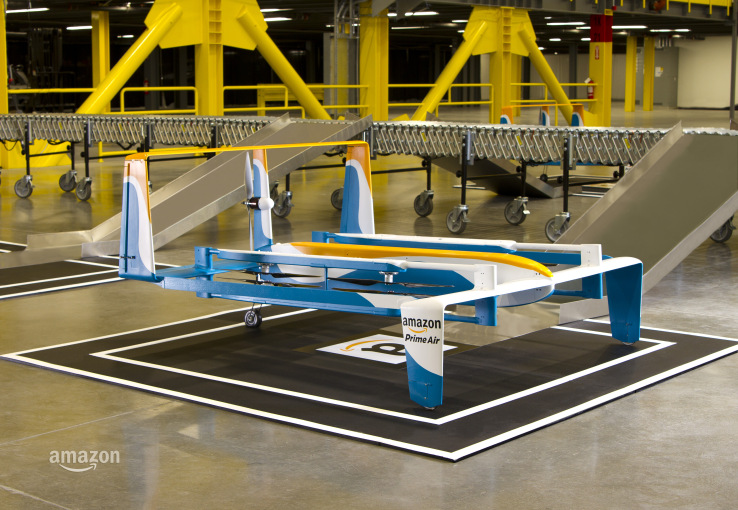

While delivery drones might be an excellent PR vehicle for Amazon’s Prime membership brand, they will not be an excellent vehicle for very much else — at least not in the short term. Rather they will be “mired in logistical issues”, reckons analyst Gartner, which has just published a drone market forecast looking ahead to 2020.
The analyst is expecting delivery drones to make up less than less than one per cent of the commercial drone market by 2020, asserting that it does not expect them to be “a major factor for several years”.
As well as complex logistical issues, such as the time needed to return a drone to its origin point after delivery, the analyst points out that a return on investment for drone deliveries has yet to be proven — putting another dampener on the prospects of any broad rollouts of the tech.
Amazon kicked off a delivery drone trial in the UK in December, but, laughably, the ‘beta trial’ has just two users. (And a very limited selection of products available for drone-freighting to the bottom of their gardens.) Safe to say, Prime Air does not appear on the verge of delivering anything more substantial than Amazon marketing fictions for the foreseeable future.
Gartner’s prediction is also that delivery drones won’t be delivering packages to consumers first, but are more likely to be deployed within or between businesses where there are fewer logistical challenges to overcome. “We expect that delivery drones will begin finding a niche in business to business applications first, particularly for internal services within one company where logistics will not be such a big factor,” notes senior research analyst, Gerald Van Hoy, in a statement.
Despite being downbeat on delivery drones’ prospects, Gartner’s forecast notes rapid growth in production of drones for both personal and commercial use, with overall global market revenue expected to increase 34 per cent to reach more than $6 billion this year — rising to more than $11.2BN by 2020.
The analyst projects a total of 2.9M drones will be produced in 2017, an increase of 39 per cent from 2016 — which it characterizes as “substantial growth” for the market overall, though it notes the dynamics of the personal and commercial drone submarkets are very different — with the personal drone market being much larger and its drones having a significantly lower average selling price.
On the personal drones side, Gartner describes the tech as an “affordable extension of consumers’ smartphones for taking photographs, selfies and for other entertainment options”. It reckons some 2.8M drones will be produced in the category this year (vs just ~174,000 commercial drones).
When it comes to commercial use-cases for drones, the analyst is most bullish about the industrial inspections segment — i.e. where drones are deployed for uses such as inspecting remote oil and gas infrastructure — saying it expects the segment to dominate commercial use-cases, taking 30 per cent of the market through to 2020. It says regulations have caused fewer problems than expected here.
But it’s a different story for agricultural use-cases, where it says growth for commercial drones has been constrained by pricing and economic constraints — so it’s expecting drone adoption for this segment to be limited to just seven per cent through to 2020. Point being, if the economics of drones don’t work, drones won’t work.
Perhaps unsurprisingly, given large price differentials between commercial vs personal drones, and the relative surfeit in production of the latter gizmos vs the former, Gartner notes increasing overlap between the two markets — with lower priced drones being appropriated for commercial ventures. But then again, as you’d expect, with ROI constraints putting limits on businesses’ use of drones it makes sense for companies to seek the most cost-effective options to make use of the tech, especially as drone tech matures and more interesting applications come on stream.
“Personal drone vendors are now aggressively trying to position themselves in the commercial market,” notes Van Hoy, adding: “Recent technological advances blur the lines, allowing personal drones to be used in many special purpose applications such as surveillance, 3D mapping and modeling.”

